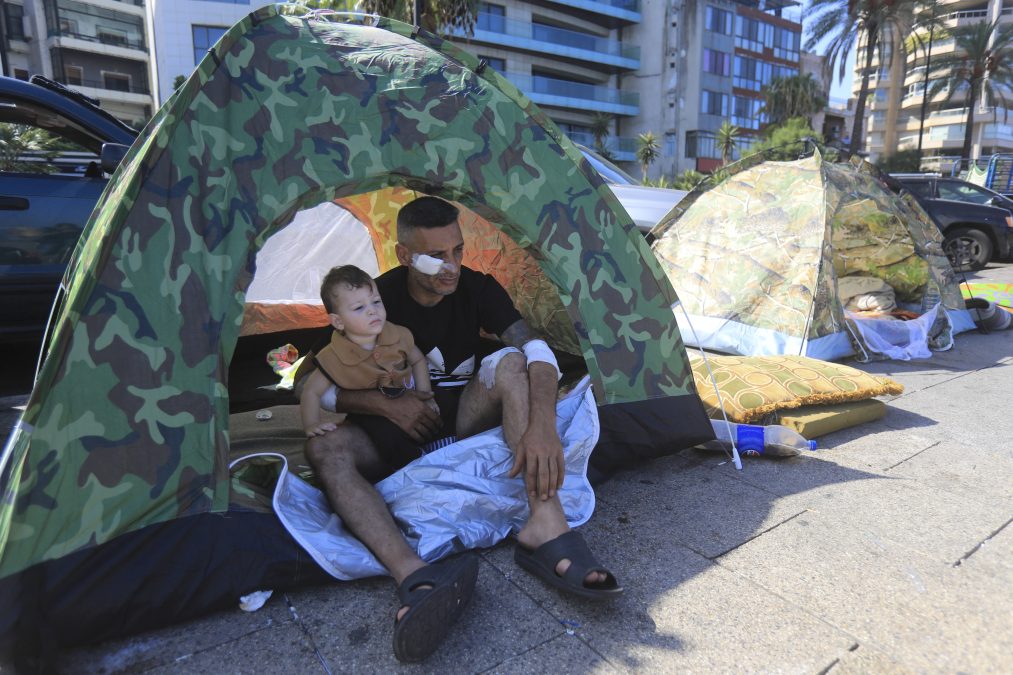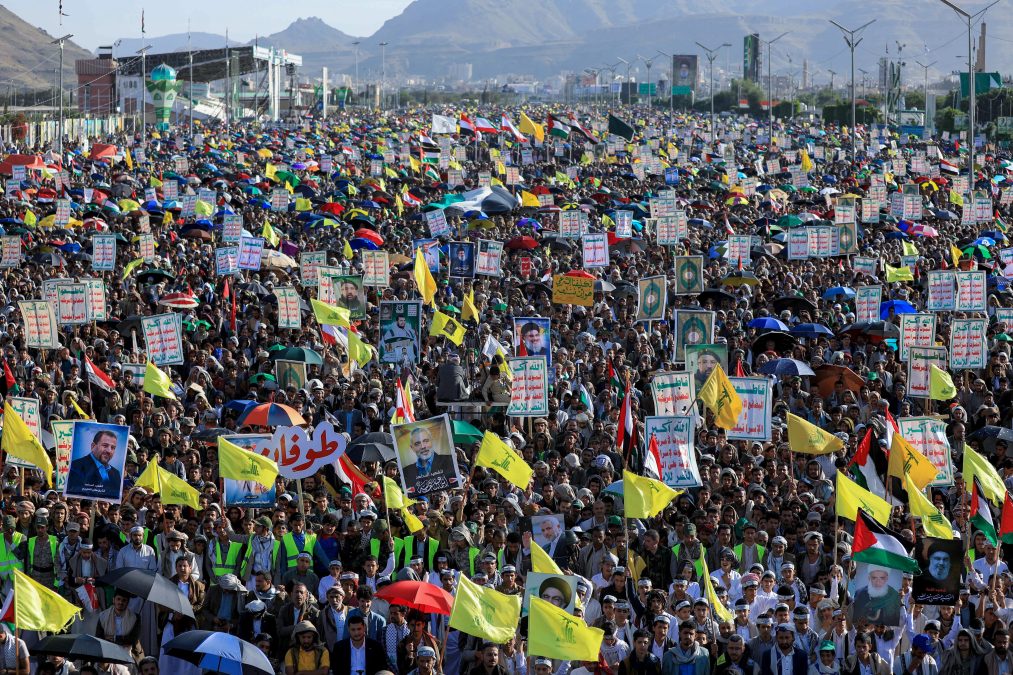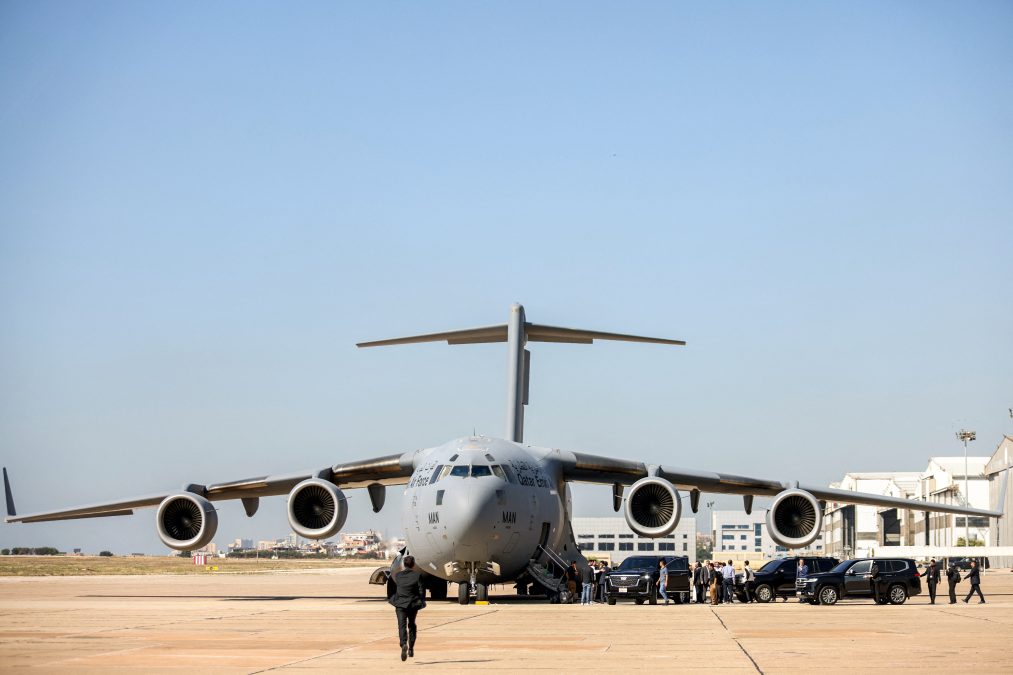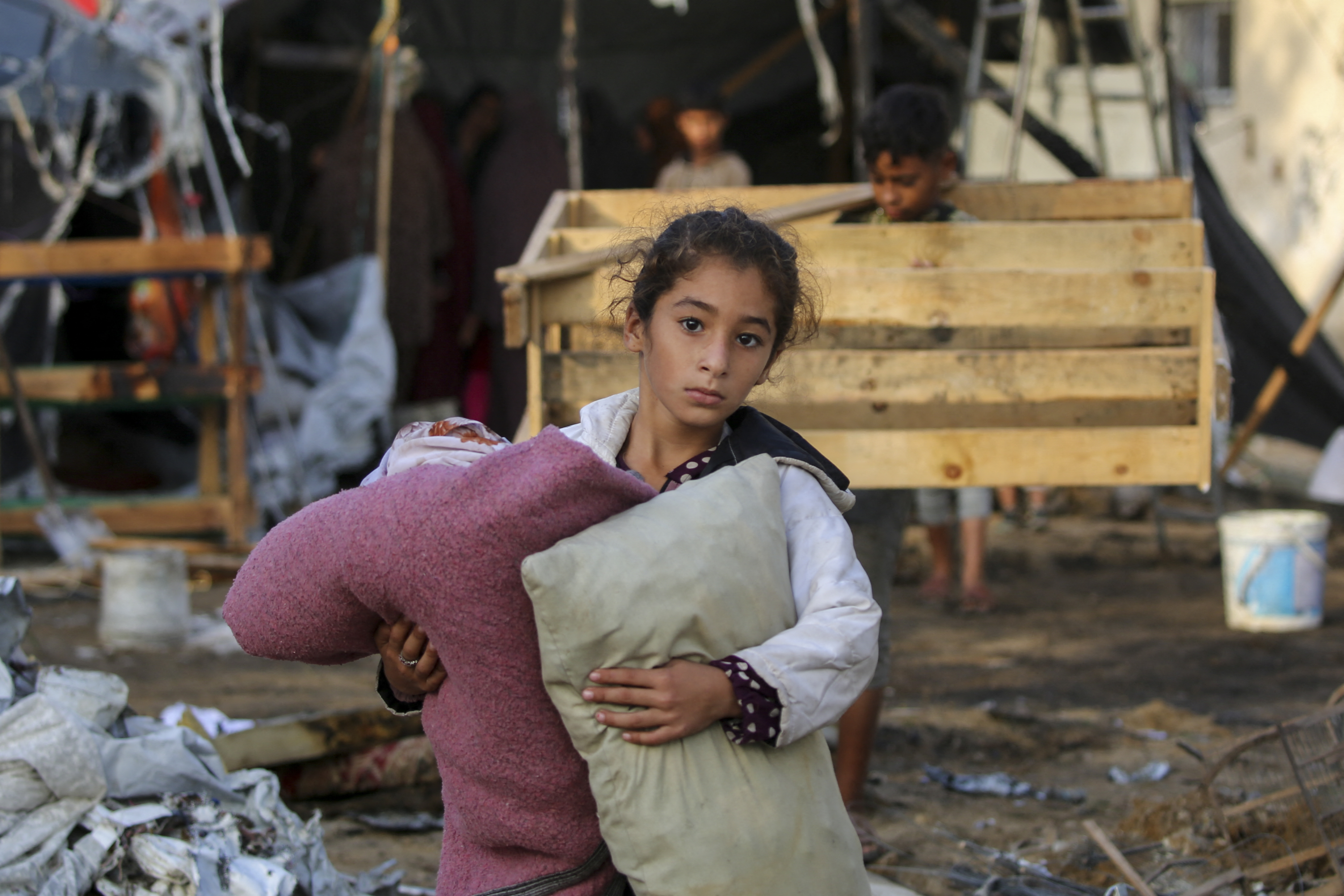Jerusalem/Beirut — The Israeli military has once again stepped up its air and ground operations in Gaza’s ravaged north, with troops even encircling the key city of Jabaliya and some surrounding areas.
The stated goal is to destroy the operational capabilities Hamas is trying to rebuild there, and for that, the military has ordered residents to evacuate the area.
AFP spoke to analysts who said the military aims to impose a total siege on Jabaliya until Hamas fighters surrender.
The army has surrounded the northern city of Jabaliya since Sunday, as well as other nearby neighborhoods.
The army said its 162nd Division began conducting operations, reporting close-quarter combat and weapons seizures.
Gaza’s civil defense agency said the area has been pounded with air strikes in recent days, with dozens killed.
The Israeli military claimed it had killed at least “20 terrorists”.
Hamas has said its fighters are targeting Israeli soldiers and tanks.
On Monday, Israeli army spokesman Avichay Adraee issued a warning on social media, urging residents of the northern towns of Beit Hanoun, Jabaliya, Beit Lahia, and other neighborhoods to evacuate to southern Gaza.
Israeli forces “are currently operating intensively in the area”, Adraee wrote in Arabic.
On Tuesday [Oct. 08], Gaza’s health ministry issued an appeal to the international community to bring in fuel lest all hospitals “stop providing services due to the lack of fuel”.
While some civilians have fled the north since the start of the operation, many have chosen to stay for want of safe alternatives, said Tariq Dana, a specialist in Palestinian politics at the Doha Institute for Graduate Studies.
“Despite the widespread destruction of infrastructure and severe shortages of food, water, medicine, and fuel, hundreds of thousands remained despite many being forced to move southward,” Dana said.
AREA OF DANGER; NOWHERE TO GO
Though he said no one would be forced to move in Gaza, Reserve Brigadier General Amir Avivi, founder of the Israel Defense and Security Forum think tank, suggested those who remained would face great danger.
“If citizens choose to stay in the middle of a war zone, it’s dangerous,” he told AFP.
In the long term, though, he said “I’m not sure it’s realistic to have full control.”
A plan for Gaza penned by retired Major General Giora Eiland suggests the evacuation of civilians could be followed by an intensified siege where nothing would enter the area until fighters surrendered.
Though the plan is not official army policy, analysts suggested that the idea of a full siege of the north of Gaza is gaining traction.
“I think that what we’ll see in areas (from) where really the citizens were evacuated to the south (that).. the IDF (military) will be able to put a siege on the area,” Avivi said.
The siege would include “making sure that there is no humanitarian aid going to this area”, to force fighters into surrender, he added.
Dana fears that the evacuations could give way to permanent displacement and loss of territory in the Gaza Strip.

“It seems Israel aims to create long-term demographic changes through displacement to fully colonize Gaza,” he said.
Ofer Shelah, a program director at Israel’s Institute for National Security Studies, said that from the Israeli standpoint, there are two choices for post-war Gaza.
“Either we move with a coalition, a Middle East coalition backed by the United States.. or we deteriorate.. into a situation where Israel is in control of northern Gaza and probably all of the Gaza Strip” he told AFP.
Though the Israeli army previously operated in the north of the Gaza Strip, its main focus in recent months had been the south of the territory.
This allowed Hamas to rebuild its military capabilities in the north, which the army says it is now targeting.
“Now we have to go back because Hamas is getting stronger there, but it’s like, you know, emptying a barrel that’s open on the other end,” Shelah said.
Avivi said Hamas units had been reduced to small isolated bands in the north.
“They are operating really very locally, you know, with small groups of three, four terrorists, maybe eight at the most, in a way that is not very coordinated,” he told AFP.
“Their capabilities are degrading all the time,” he added, pointing to rocket launches from Gaza on Monday, which he said were small in comparison to those of a year ago.
SHELTER AMID RUINS
Civilians in Gaza continue to live in ramshackle shelters, struggle to find food and are gripped by uncertainty, according to the Red Cross, even as the Israeli military has shifted its focus to its Lebanon offensive.
Large swaths of Gaza have been reduced to rubble since Israel launched its retaliatory military assault on the Palestinian territory in the wake of the October 7, 2023, Hamas onslaught in southern Israel.
Israel has pummeled Gaza by land, air and sea as it targeted Hamas and other militant groups, displacing almost all of its civilian population of 2.4 million people at least once in the past year.
In recent weeks, Israel has turned much of its attention to fighting along its northern border, as it launched air strikes on Hezbollah positions in Beirut and sent ground troops into south Lebanon.
Despite the shift in focus, life in Gaza for civilians remains grim and wracked by insecurity, according to International Committee of the Red Cross spokeswoman Sarah Davies, who is currently in Al-Mawasi area of Gaza.
“They’re still living here in tents. They still can’t return to their homes. They still don’t know whether their homes are standing. They’re still struggling to feed their families every day, to find drinkable water, to find the energy to keep going,” Davies told AFP in an online interview.

Regular explosions and the occasional sound of gunfire continue to be heard in Gaza, according to Davies.
While thousands of troops have been shifted to Israel’s northern frontier with Lebanon, Israel announced new operations in parts of Gaza over the weekend as its forces encircled the Jabaliya area, and new evacuation orders were published by the army on Saturday.
UNCERTAIN SITUATION
“People are very tense every time they hear new evacuation orders are issued,” said Davies. “I think for people on the ground, it’s a very uncertain situation. It’s very scary.”
Dozens of people have already died in Jabaliya in the latest military assault, according to Gaza civil defense agency, while the Israeli military has reported killing “20 terrorists”.
Israel’s military offensive in Gaza has killed at least 41,965 people since the October 7 attack, the majority of them civilians, according to figures provided by the Hamas-run territory’s health ministry.
The United Nations acknowledges the figures as reliable.
Amid the fighting, the few remaining hospitals and clinics in Gaza have been hit hard by a lack of supplies, with humanitarian aid into the territory restricted.
Medical facilities have limited access to fuel that is vital to running their operations, adding another layer of stress for doctors and nurses, according to Davies.
As a result, medical professionals are often left “wondering what will happen in the coming days every time that they’re waiting for fuel, for spare parts for the generator to see if they can maintain that generator to have lights in the operating theatre so they can save people’s lives,” said Davies.
Since the October 7 attack, Israel has been engaged in a multi-front war as its military has sent ground troops into Gaza and Lebanon and launched regular air raids in neighboring Syria, while also targeting Houthi militants in Yemen.
The Hamas-led attacks left 1,206 dead on Israeli side, mostly civilians, according to an AFP tally based on official Israeli figures, which includes hostages killed and who died in captivity.
ASSURANCES AND PROMISES FOR LEBANON
Meanwhile, in Beirut, the government said it has received “assurances” that Israel will not target the country’s only international airport, Lebanon’s transport minister told AFP, but said those fell short of guarantees.
Since September 23, Israel has launched an intense air campaign claiming to target Hezbollah strongholds in Lebanon including Beirut’s southern suburbs, adjacent to the airport.
On Monday, the United States warned Israel not to attack the Beirut airport or the roads leading to it, after repeated Israeli strikes near the facility.
Lebanon “seeks to keep its public airport, sea ports and land crossings — chief among them the Rafik Hariri International Airport — functional,” Minister of Public Works and Transport Ali Hamieh told AFP.
“Ongoing international calls have given us a sort of assurance” the airport will be spared Israeli strikes, he said, however adding that “there is a big difference between assurances and guarantees”.
Hamieh denied Israeli accusations that Hezbollah was using the airport and border crossings to smuggle weapons.
The Beirut airport “is subject to Lebanese laws and to the scrutiny of various relevant departments and security agencies”, he said.
“Any military aircraft or plane carrying weapons must be approved by the Lebanese army” and be licensed to do so by his ministry.
He said his ministry was “fully coordinating” with the army and relevant state agencies to keep land, air and sea ports safe because “if these ports are closed, it means we’re under siege”.
On Friday, the Israeli army said its fighter jets struck Hezbollah targets near the Masnaa border crossing, damaging the main road between Lebanon and Syria and preventing vehicles from getting through.
Dozens are still crossing the border on foot.
Lebanon’s government said more than 400,000 people had fled to Syria to escape Israeli bombardment, with tens of thousands crossing from Masnaa before the main road was bombed.
“Closing off this crossing has created a big problem,” Hamieh said, adding that the government was “making the necessary calls to get it back up and running again”.
The Masnaa crossing is Lebanon’s mainland gateway to the rest of the region.
“The Masnaa crossing is a major crossing… for imports and exports, and a vital crossing for Lebanese farmers and industrialists for land exports,” he said.
AIR BRIDGE FOR LEBANON AID
Doha launched an “air bridge” to transport medical supplies and food aid to Lebanon, a Qatari minister said in Beirut on Tuesday, more than two weeks into intense Israeli strikes on the country.
“Today we launched the air bridge with consecutive planes carrying food, shelter materials and medical supplies,” said Qatar’s Minister of State for International Cooperation Lolwah Al-Khater from a public hospital in Beirut.

She said Doha was working “on medium and long-term plans to contain this humanitarian crisis”.
Since September 23, Israel has launched an intense air campaign mainly targeting Hezbollah strongholds in Lebanon, killing more than 1,150 people and displacing upwards of a million people.
Lebanese Health Minister Firass Abiad said the Qatari aid “will help cover shortages of medical, relief and support supplies” and will be “a vital push” for the hundreds of thousands of displaced and injured people.
Prime Minister Najib Mikati also met the Qatari minister.
A French plane carrying medical aid also landed in Beirut Tuesday, one of several planeloads of aid that arrived at Lebanon’s only international airport since the escalation began.
The United Arab Emirates, Turkey, Iraq, Egypt, Jordan and Romania are also among the countries that have sent aid to Lebanon.








